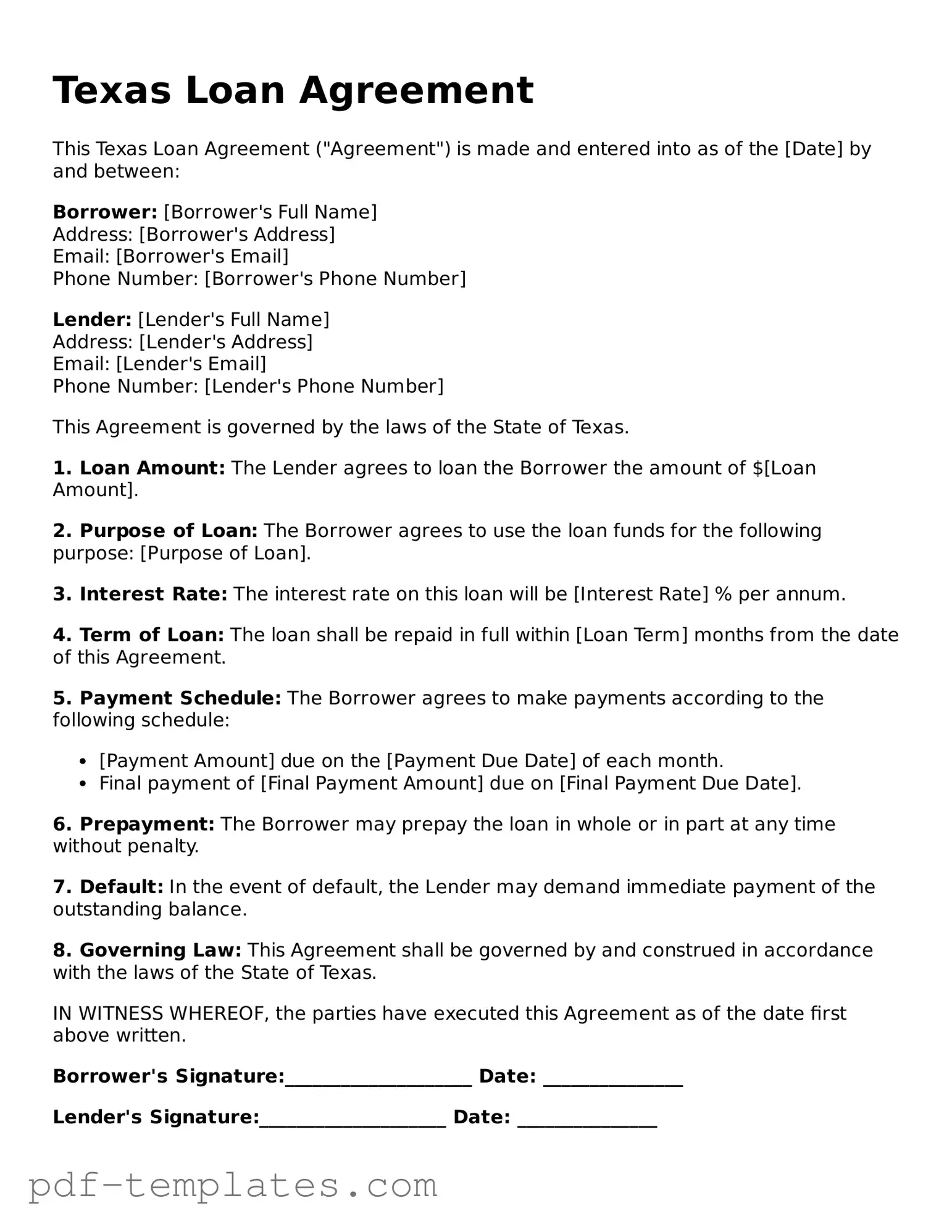The Texas Loan Agreement form shares similarities with a Promissory Note. Both documents outline the terms of a loan, including the amount borrowed, interest rate, and repayment schedule. A Promissory Note serves as a written promise from the borrower to repay the loan, while the Texas Loan Agreement provides a more comprehensive overview of the loan's terms, including any collateral involved and the rights of both parties. Together, they ensure clarity and accountability in the lending process.
For those navigating the complexities of property transactions, understanding the intricacies of various documentation is essential, particularly when it comes to securing financial agreements related to real estate. A Mechanics Lien California form, for instance, is instrumental for contractors and suppliers in asserting their payment claims. This legally binding document establishes a lien on a property, effectively ensuring that payment disputes are resolved before any potential sale or refinancing occurs. For more resources and legal clarity, you can refer to All California Forms which provides comprehensive guidelines and templates for such important legal forms.
Another document that resembles the Texas Loan Agreement is the Mortgage Agreement. This document is typically used in real estate transactions and details the terms under which a borrower can secure a loan using property as collateral. Like the Texas Loan Agreement, it specifies the loan amount, interest rate, and repayment terms. However, a Mortgage Agreement also includes provisions related to foreclosure, should the borrower default on the loan, emphasizing the importance of collateral in securing the loan.
A Credit Agreement is also similar to the Texas Loan Agreement. This document is often used in business lending and outlines the terms under which a lender extends credit to a borrower. Both agreements detail the loan amount, interest rate, and repayment terms. However, a Credit Agreement may also include additional clauses related to covenants, which are promises the borrower makes to maintain certain financial conditions, thus providing the lender with added security.
The Texas Loan Agreement is akin to a Loan Modification Agreement as well. This document is used when the original terms of a loan need to be changed, often due to financial hardship faced by the borrower. Both documents address the terms of repayment, but a Loan Modification Agreement specifically alters the existing agreement to make payments more manageable. This ensures that both parties can continue to meet their obligations while providing flexibility in the repayment process.
Lastly, a Personal Loan Agreement is another document similar to the Texas Loan Agreement. This type of agreement is often used for unsecured loans between individuals. It outlines the loan amount, interest rate, and repayment schedule, much like the Texas Loan Agreement. However, a Personal Loan Agreement may be less formal and typically does not involve collateral, relying instead on the trust between the parties involved. This highlights the personal nature of the transaction while still establishing clear expectations.
